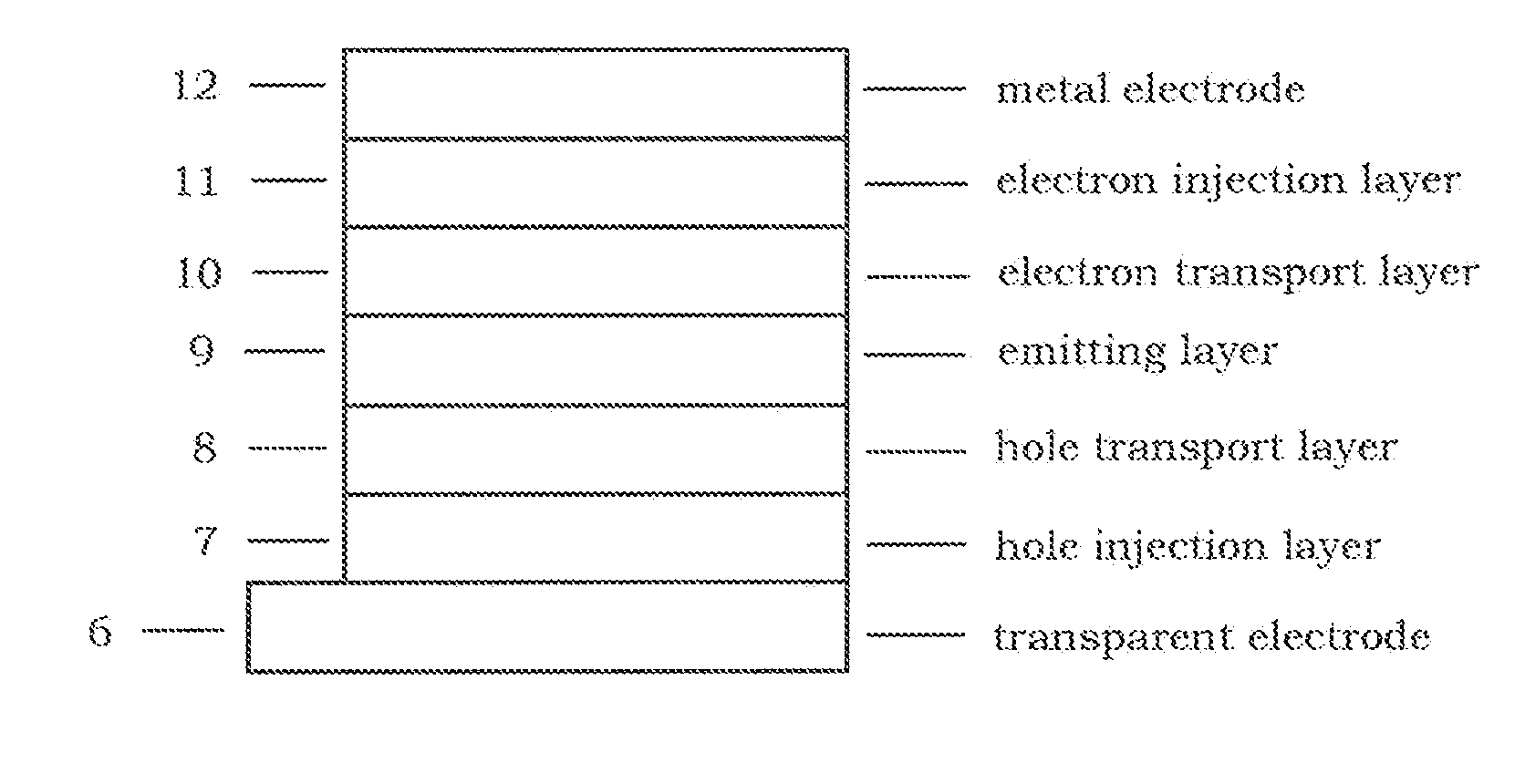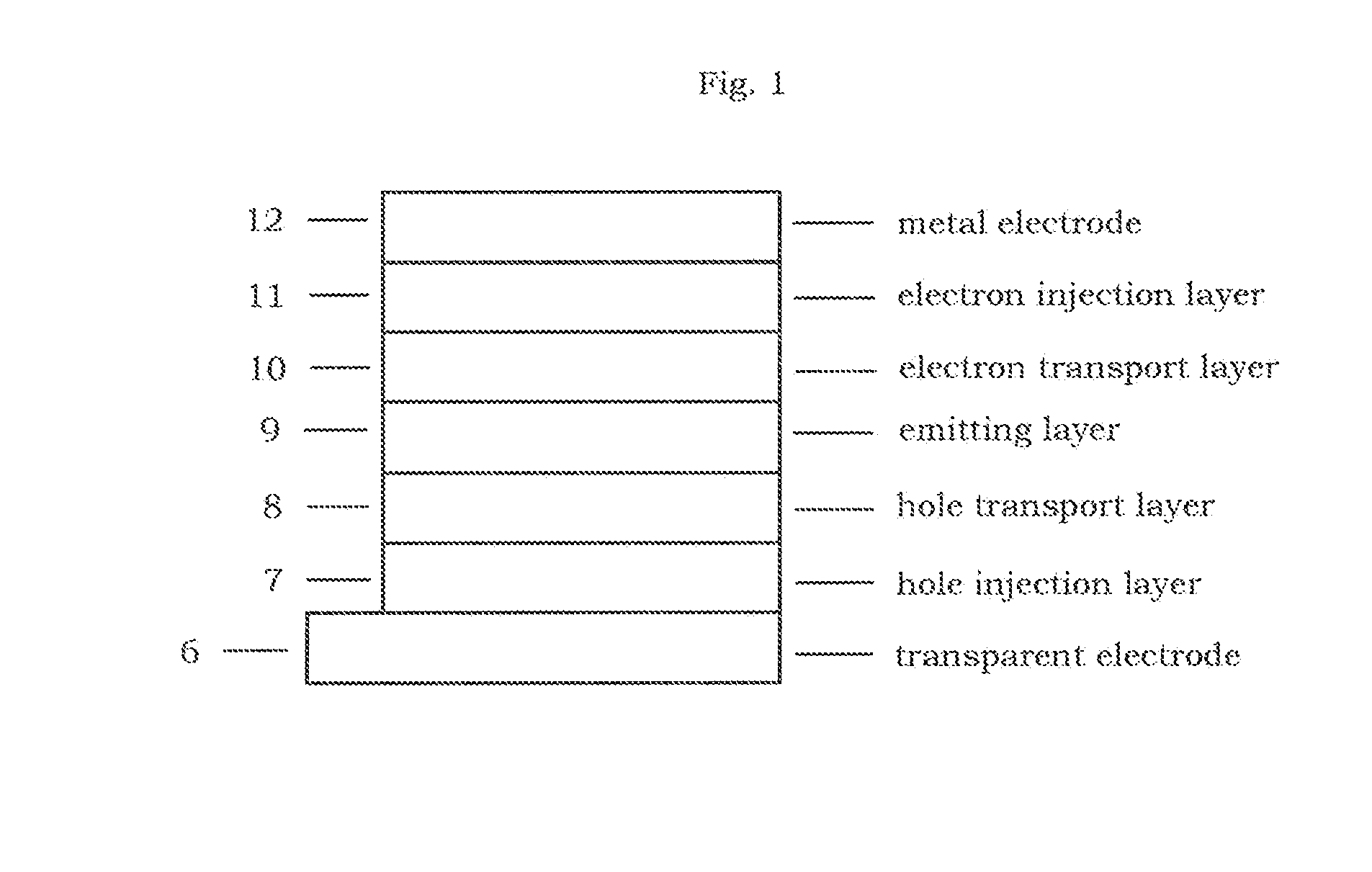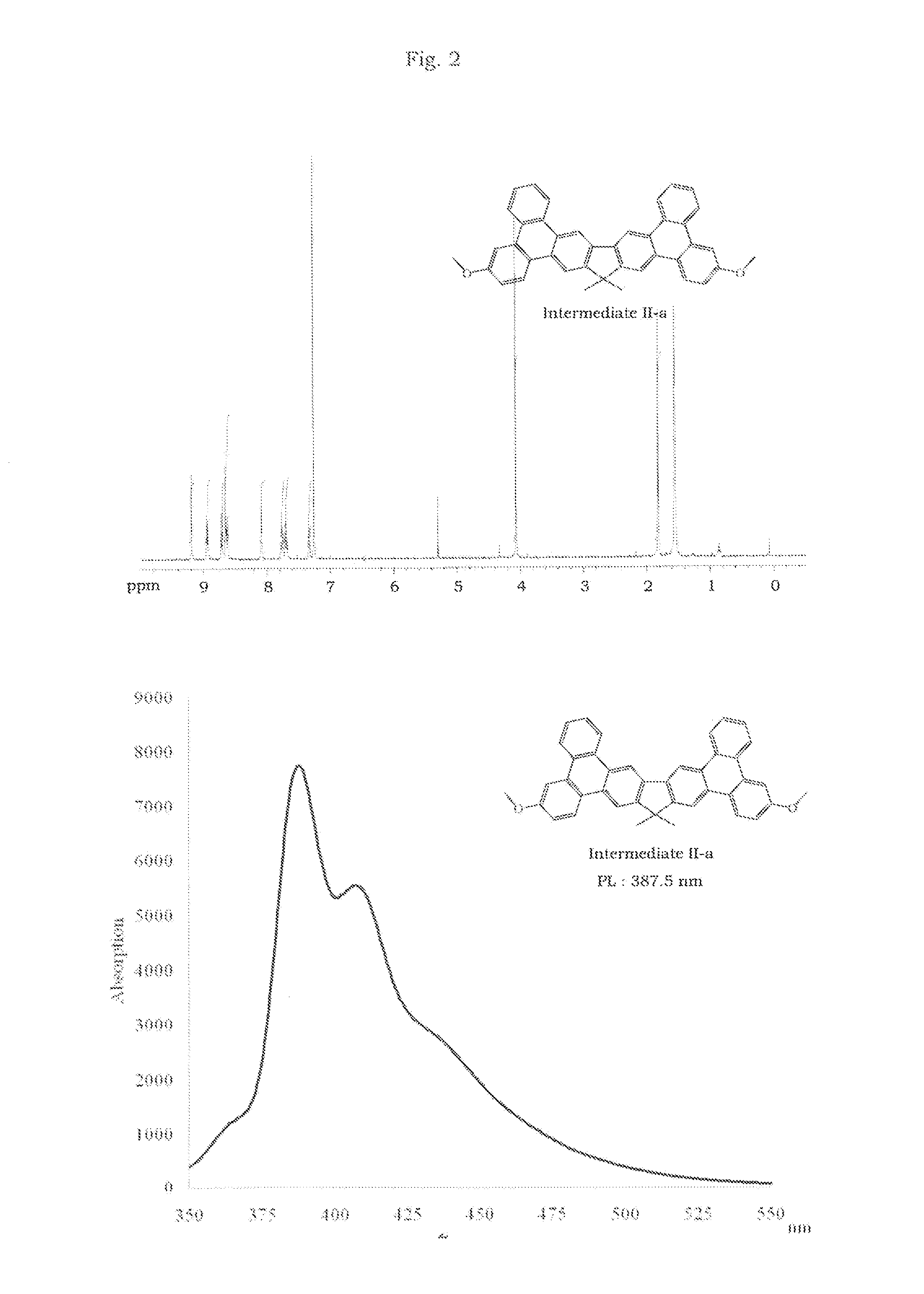Ditriphenylene derivative and organic electroluminescent device using the same
- Summary
- Abstract
- Description
- Claims
- Application Information
AI Technical Summary
Benefits of technology
Problems solved by technology
Method used
Image
Examples
example 1
Synthesis of Intermediate II-a
[0022]Synthesis of 5-methoxybiphenyl-2-ylboronic acid
[0023]An excess of 1.6 M n-BuLi in hexane (50 mL, 80 mmol) was added to a solution of 2-bromo-5-methoxybiphenyl (19.1 g, 72.7 mmol) in 350 ml dry tetrahydrofuran at −78° C. under N2. The reaction mixture was then maintained at 0° C. for 1 h before cooling to −78° C., trimethylborate (10.4 g, 100 mmol) was added dropwise, the solution was then warmed slowly to room temperature and stirred for 24 h. 2N HCl (150 ml) was added and then the mixture was stirred for a further 1 h. The reaction mixture was extracted with ethyl acetate and water, dried with anhydrous magnesium sulfate, the solvent was evaporated in vacuum, and the residue was crystallized from n-hexane to give 9.5 g of the 5-methoxybiphenyl-2-ylboronic acid as a white solid (57%).
[0024]Synthesis of 2,7-bis(5-methoxybiphenyl-2-yl)-9,9-dimethyl-9H-fluorene
[0025]A mixture of 3.52 g (10 mmol) of 2,7-dibromo-9,9-dimethyl-9H-fluorene, 5.5 g (24 mmol...
example 2
Synthesis of Intermediate II-b
[0028]Synthesis of 2-bromo-7-(5-methoxybiphenyl-2-yl)-9,9-dimethyl-9H-fluorene
[0029]A mixture of 3.52 g (10 mmol) of 2,7-dibromo-9,9-dimethyl-9H-fluorene, 2.75 g (12 mmol) of 5-methoxybiphenyl-2-ylboronic acid, 0.12 g (0.1 mmol) of tetrakis(triphenylphosphine)palladium, 15 ml of 2M Na2CO3, 20 ml of EtOH and 60 ml toluene was degassed and placed under nitrogen, and then heated at 110° C. for 8 h. After finishing the reaction, the mixture was allowed to cool to room temperature. The reaction mixture was extracted with ethyl acetate and water, dried with anhydrous magnesium sulfate, the solvent was evaporated in vacuum. The residue was purified by column chromatography on silica(hexane-dichloromethane) afforded a white solid (3.4 g, 7.5 mmol, 75%).
[0030]Synthesis of 2-(biphenyl-2-yl)-7-(5-methoxybiphenyl-2-yl)-9,9-dimethyl-9H-fluorene
[0031]A mixture of 3.4 g (7.5 mmol) of 2-bromo-7-(5-methoxybiphenyl-2-yl)-9,9-dimethyl-9H-fluorene, 2 g (10 mmol) of bipheny...
example 3
Synthesis of Intermediate III-a
[0034]Synthesis of 2,7-dibromo-9-phenyl-9H-carbazole
[0035]A mixture of 32.5 g (100 mmole) 2,7-dibromo-9H-carbazole, 20.4 g (100 mmole) iodobenzene, 9.5 g (150 mmole) of copper powder, 27.6 g (200 mmole) of potassium carbonate, and 600 ml dimethylformamide were heated at 130° C. under nitrogen overnight, then cooled to room temperature, the solution was filtered. The filtrate was extracted three times with dichloromethane and water, dried with anhydrous magnesium sulfate, the solvent was evaporated in vacuum. The residue was purified by column chromatography on silica(hexane-dichloromethane) afforded a white solid (31.3 g, 78 mmol, 78%).
[0036]Synthesis of 9-phenyl-2,7-bis(4,4,5,5-tetramethyl-1,3,2-dioxa borolan-2-yl)-9H-carbazole
[0037]A mixture of 11.9 g (29.6 mmol) 2,7-dibromo-9-phenyl-9H-carbazole, 18.8 g (74 mmol) of bis(pinacolato)diboron, 0.7 g (0.6 mmol) of tetrakis(triphenylphosphine)palladium, 8.7 g (89 mmol) of potassium acetate, and 500 ml 1,4...
PUM
| Property | Measurement | Unit |
|---|---|---|
| Time | aaaaa | aaaaa |
| Efficiency | aaaaa | aaaaa |
| Transport properties | aaaaa | aaaaa |
Abstract
Description
Claims
Application Information
 Login to View More
Login to View More - R&D
- Intellectual Property
- Life Sciences
- Materials
- Tech Scout
- Unparalleled Data Quality
- Higher Quality Content
- 60% Fewer Hallucinations
Browse by: Latest US Patents, China's latest patents, Technical Efficacy Thesaurus, Application Domain, Technology Topic, Popular Technical Reports.
© 2025 PatSnap. All rights reserved.Legal|Privacy policy|Modern Slavery Act Transparency Statement|Sitemap|About US| Contact US: help@patsnap.com



